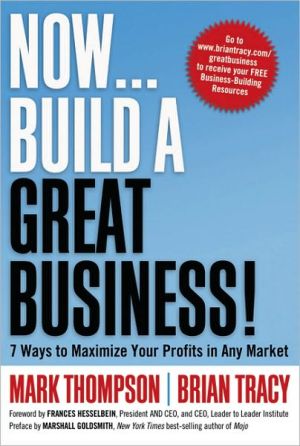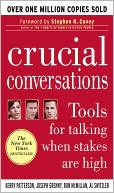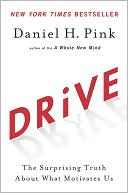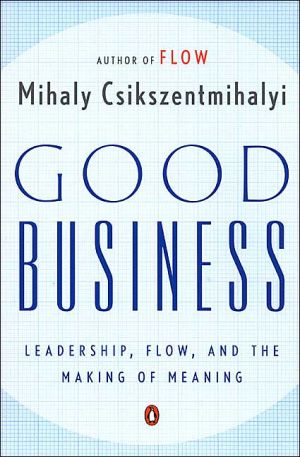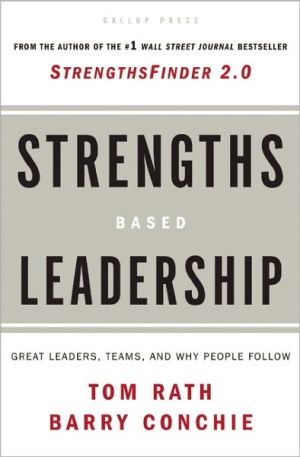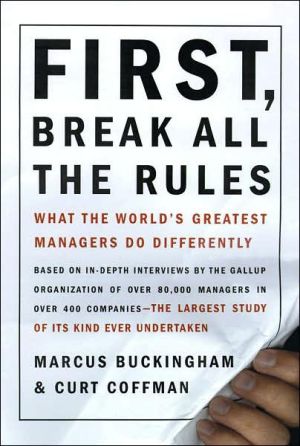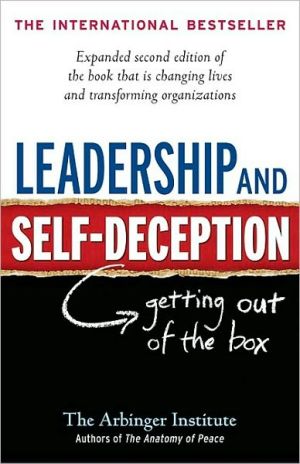Execution: The Discipline of Getting Things Done
#1 NEW YORK TIMES BESTSELLER • More than two million copies in print! The premier resource for how to deliver results in an uncertain world, whether you’re running an entire company or in your first management job. “A must-read for anyone who cares about business.”—The New York Times When Execution was first published, it changed the way we did our jobs by focusing on the critical importance of “the discipline of execution”: the ability to make the final leap to success by actually...
Search in google:
The book that shows how to get the job done and deliver results . . . whether you're running an entire company or in your first management jobLarry Bossidy is one of the world's most acclaimed CEOs, a man with few peers who has a track record for delivering results. Library Journal Bossidy, an award-winning executive at General Electric and Allied Signal, came out of retirement to tend to Honeywell (and bring it back to prominence) after it failed to merge with General Electric. Charan has taught at Harvard and Kellogg Business Schools. Collaborating with editor and writer Burck, they present the viewpoint that execution (that is, linking a company's people, strategy, and operations) is what will determine success in today's business world. Bossidy and Charan aver that execution is a discipline integral to strategy, that it is the major job of any business leader hoping not just to be a success but to dominate a market, and that it is a core element of corporate culture. Details of both successful and unsuccessful executions at corporations such as Dell, Johnson & Johnson, and Xerox, to name a few, support not only their how-to method for bringing execution to the forefront but also the need for it. Each author addresses specific topics in paragraphs that begin with either "Larry" or "Ram," and this easy style adds to the appeal of a very readable book. Recommended for academic and public libraries.-Steven J. Mayover, Philadelphia Copyright 2002 Cahners Business Information.
CHAPTER 1\ The Gap Nobody Knows\ The CEO was sitting in his office late one evening, looking tired and drained. He was trying to explain to a visitor why his great strategic initiative had failed, but he couldn't figure out what had gone wrong.\ "I'm so frustrated," he said. "I got the group together a year ago, people from all the divisions. We had two off-site meetings, did benchmarking, got the metrics. McKinsey helped us. Everybody agreed with the plan. It was a good one, and the market was good.\ "This was the brightest team in the industry, no question about it. I assigned stretch goals. I empowered them-gave them the freedom to do what they needed to do. Everybody knew what had to be done. Our incentive system is clear, so they knew what the rewards and penalties would be. We worked together with high energy. How could we fail?\ "Yet the year has come to an end, and we missed the goals. They let me down; they didn't deliver the results. I have lowered earnings estimates four times in the past nine months. We've lost our credibility with the Street. I have probably lost my credibility with the board. I don't know what to do, and I don't know where the bottom is. Frankly, I think the board may fire me."\ Several weeks later the board did indeed fire him.\ This story-it's a true one-is the archetypal story of the gap that nobody knows. It's symptomatic of the biggest problem facing corporations today. We hear lots of similar stories when we talk to business leaders. They're played out almost daily in the press, when it reports on companies that should be succeeding but aren't: Aetna, AT&T, British Airways, Campbell Soup, Compaq, Gillette, Hewlett-Packard, Kodak, Lucent Technologies, Motorola, Procter & Gamble, Xerox, and many others.\ These are good companies. They have smart CEOs and talented people, they have inspiring visions, and they bring in the best consultants. Yet they, and many other companies as well, regularly fail to produce promised results. Then when they announce the shortfall, investors dump their stocks and enormous market value is obliterated. Managers and employees are demoralized. And increasingly, boards are forced to dump the CEOs.\ The leaders of all the companies listed above were highly regarded when they were appointed-they seemed to have all of the right qualifications. But they all lost their jobs because they didn't deliver what they said they would. In the year 2000 alone, forty CEOs of the top two hundred companies on Fortune's 500 list were removed-not retired but fired or made to resign. When 20 percent of the most powerful business leaders in America lose their jobs, something is clearly wrong. This trend continued in 2001 and will clearly be in evidence in 2002.\ In such cases it's not just the CEO who suffers-so do the employees, alliance partners, shareholders, and even customers. And it's not just the CEO whose shortcomings create the problem, though of course he or she is ultimately responsible.\ What is the problem? Is it a rough business environment? Yes. Whether the economy is strong or weak, competition is fiercer than ever. Change comes faster than ever. Investors-who were passive when today's senior leaders started their careers-have turned unforgiving. But this factor by itself doesn't explain the near-epidemic of shortfalls and failures. Despite this, there are companies that deliver on their commitments year in and year out-companies such as GE, Wal-Mart, Emerson, Southwest Airlines, and Colgate-Palmolive.\ When companies fail to deliver on their promises, the most frequent explanation is that the CEO's strategy was wrong. But the strategy by itself is not often the cause. Strategies most often fail because they aren't executed well. Things that are supposed to happen don't happen. Either the organizations aren't capable of making them happen, or the leaders of the business misjudge the challenges their companies face in the business environment, or both.\ Former Compaq CEO Eckhard Pfeiffer had an ambitious strategy, and he almost pulled it off. Before any of his competitors, he saw that the so-called Wintel architecture-the combination of the Windows operating system and Intel's constant innovation-would serve for everything from a palm-held to a linked network of servers capable of competing with mainframes.\ Mirroring IBM, Pfeiffer broadened his base to serve all the computing needs of enterprise customers. He bought Tandem, the high-speed, failsafe mainframe manufacturer, and Digital Equipment Company (DEC) to give Compaq serious entry into the services segment. Pfeiffer moved at breakneck speed on his bold strategic vision, transforming Compaq from a failing niche builder of high-priced office PCs to the second-biggest computer company (after IBM) in just six years. By 1998 it was poised to dominate the industry.\ But the strategy looks like a pipe dream today. Integrating the acquisitions and delivering on the promises required better execution than Compaq was able to achieve. More fundamentally, neither Pfeiffer nor his successor, Michael Capellas, pursued the kind of execution necessary to make money as PCs became more and more of a commodity business.\ Michael Dell understood that kind of execution. His direct-sales and build-to-order approach was not just a marketing tactic to bypass retailers; it was the core of his business strategy. Execution is the reason Dell passed Compaq in market value years ago, despite Compaq's vastly greater size and scope, and it's the reason Dell passed Compaq in 2001 as the world's biggest maker of PCs. As of November 2001, Dell was shooting to double its market share, from approximately 20 to 40 percent.\ Any company that sells direct has certain advantages: control over pricing, no retail markups, and a sales force dedicated to its own products. But that wasn't Dell's secret. After all, Gateway sells direct too, but lately it has fared no better than Dell's other rivals. Dell's insight was that building to order, executing superbly, and keeping a sharp eye on costs would give him an unbeatable advantage.\ In conventional batch production manufacturing, a business sets its production volume based on the demand that is forecast for the coming months. If it has outsourced component manufacturing and just does the assembling, like a computer maker, it tells the component suppliers what volumes to expect and negotiates the prices. If sales fall short of projections, everybody gets stuck with unsold inventory. If sales are higher, they scramble inefficiently to meet demand.\ Building to order, by contrast, means producing a unit after the customer's order is transmitted to the factory. Component suppliers, who also build to order, get the information when Dell's customers place their orders. They deliver the parts to Dell, which immediately places them into production, and shippers cart away the machines within hours after they're boxed. The system squeezes time out of the entire cycle from order to delivery-Dell can deliver a computer within a week or less of the time an order is placed. This system minimizes inventories at both ends of the pipeline, incoming and outgoing. It also allows Dell customers to get the latest technological improvements more often than rivals' customers.\ Build-to-order improves inventory turnover, which increases asset velocity, one of the most underappreciated components of making money. Velocity is the ratio of sales dollars to net assets deployed in the business,\ which in the most common definition includes plant and equipment, inventories, and accounts receivable minus accounts payable. Higher velocity improves productivity and reduces working capital. It also improves cash flow, the life blood of any business, and can help improve margins as well as revenue and market share.\ Inventory turns are especially important for makers of PCs, since inventories account for the largest portion of their net assets. When sales fall below forecast, companies with traditional batch manufacturing, like Compaq, are stuck with unsold inventory. What's more, computer components such as microprocessors are particularly prone to obsolescence because performance advances so rapidly, often accompanied by falling prices. When these PC makers have to write off the excess or obsolete inventory, their profit margins can shrink to the vanishing point.\ Dell turns its inventory over eighty times a year, compared with about ten to twenty times for its rivals, and its working capital is negative. As a result, it generates an enormous amount of cash. In the fourth quarter of fiscal 2002, with revenues of $8.1 billion and an operating margin of 7.4 percent, Dell had cash flow of $1 billion from operations. Its return on invested capital for Fiscal 2001 was 355 percent-an incredible rate for a company with its sales volume. Its high velocity also allows it to give customers the latest technological improvements ahead of other makers, and to take advantage of falling component costs-either to improve margins or to cut prices.\ These are the reasons Dell's strategy became deadly for its competitors once PC growth slowed. Dell capitalized on their misery and cut prices in a bid for market share, increasing the distance between it and the rest of the industry. Because of its high velocity, Dell could show high return on capital and positive cash flow, even with margins depressed. Its competition couldn't.\ The system works only because Dell executes meticulously at every stage. The electronic linkages among suppliers and manufacturing create a seamless extended enterprise. A manufacturing executive we know who worked at Dell for a time calls its system "the best manufacturing operation I've ever seen."\ As this book goes to press, the merger between Compaq and Hewlett-Packard, proposed in mid-2001, is still up in the air. No matter: Alone or in combination, nothing they do will make them competitive with Dell unless they come up with an equal or better build-to-order production model.\ The chronic underperformers we've mentioned so far have lots of company. Countless others are less than they could be because of poor execution. The gap between promises and results is widespread and clear. The gap nobody knows is the gap between what a company's leaders want to achieve and the ability of their organization to achieve it.\ Everybody talks about change. In recent years, a small industry of changemeisters has preached revolution, reinvention, quantum change, breakthrough thinking, audacious goals, learning organizations, and the like. We're not necessarily debunking this stuff. But unless you translate big thoughts into concrete steps for action, they're pointless. Without execution, the breakthrough thinking breaks down, learning adds no value, people don't meet their stretch goals, and the revolution stops dead in its tracks. What you get is change is for the worse, because failure drains the energy from your organization. Repeated failure destroys it.\ These days we're hearing a more practical phrase on the lips of business leaders. They're talking about taking their organizations to the "next level," which brings the rhetoric down to earth. GE CEO Jeff Immelt, for example, is asking his people how they can use technology to differentiate their way to the next level and command better prices, margins, and revenue growth.\ This is an execution approach to change. It's reality-based-people can envision and discuss specific things they need to do. It recognizes that meaningful change comes only with execution.\ No company can deliver on its commitments or adapt well to change unless all leaders practice the discipline of execution at all levels. Execution has to be a part of a company's strategy and its goals. It is the missing link between aspirations and results. As such, it is a major-indeed, the major-job of a business leader. If you don't know how to execute, the whole of your effort as a leader will always be less than the sum of its parts.
Introduction1Pt. IWhy Execution is Needed1The Gap Nobody Knows132The Execution Difference35Pt. IIThe Building Blocks of Execution3Building Block One: The Leader's Seven Essential Behaviors574Building Block Two: Creating the Framework for Cultural Change855Building Block Three: The Job No Leader Should Delegate - Having the Right People in the Right Place109Pt. IIIThe Three Core Processes of Execution6The People Process: Making the Link with Strategy and Operations1417The Strategy Process: Making the Link with People and Operations1788How to Conduct a Strategy Review2079The Operations Process: Making the Link with Strategy and People226Conclusion: Letter to a New Leader265Index271
\ From Barnes & NobleUnlike many other books on the market that stress high-minded, complex theories, Larry Bossidy's and Ran Charan's Execution is a unique and indispensable guide to corporate strategy that focuses on the quality most essential to every business -- the ability to get things done. Bossidy, the chairman and CEO of Honeywell International, and Charan, a much-praised adviser to companies such as General Electric, use the simple metaphor of building a house to illustrate the importance of execution: The concerns that often occupy the attention of executives -- incentive systems, process design, promotions, new approaches to organization structure -- are just the walls or roof of a house, while successful execution is the true core, the foundation upon which everything else rests. As the authors note in their introduction, "Execution is a systematic process of rigorously discussing hows and whats, questioning, tenaciously following through, and ensuring accountability." If you want to create an organization in which strategic planning and day-to-day operations are supported by tangible results, then this book will be an invaluable guide. Execution may well be the most useful business book you'll read this year.\ \ \ \ \ Library JournalBossidy, an award-winning executive at General Electric and Allied Signal, came out of retirement to tend to Honeywell (and bring it back to prominence) after it failed to merge with General Electric. Charan has taught at Harvard and Kellogg Business Schools. Collaborating with editor and writer Burck, they present the viewpoint that execution (that is, linking a company's people, strategy, and operations) is what will determine success in today's business world. Bossidy and Charan aver that execution is a discipline integral to strategy, that it is the major job of any business leader hoping not just to be a success but to dominate a market, and that it is a core element of corporate culture. Details of both successful and unsuccessful executions at corporations such as Dell, Johnson & Johnson, and Xerox, to name a few, support not only their how-to method for bringing execution to the forefront but also the need for it. Each author addresses specific topics in paragraphs that begin with either "Larry" or "Ram," and this easy style adds to the appeal of a very readable book. Recommended for academic and public libraries.-Steven J. Mayover, Philadelphia Copyright 2002 Cahners Business Information.\ \ \ Soundview Executive Book SummariesExecution is the discipline of getting things done, and according to CEO extraordinaire Larry Bossidy, it is the leader's most important job. He explains that, in order to turn AlliedSignal around from a disconnected company with no productivity culture to one with a ninefold return for shareholders, he needed to create a discipline of execution. Together with Ram Charan, a Harvard professor and respected business author, he turns his ample experience into a plan that links people, strategy and operations.\ According to the authors, execution is built on three basic blocks. The first block is composed of seven essential leadership behaviors. These are:\ \ Know your people and your business.\ Insist on realism.\ Set clear goals and priorities.\ Follow through.\ Reward the doers.\ Expand people's capabilities.\ Know yourself.\ \ \ \ \ The next building block of execution involves creating the framework for cultural change within an organization. A culture is a group of people who share the same values, beliefs, and norms of behavior. The authors write that values need to be reinforced by the people at the highest levels of the company. People's beliefs are conditioned by training, experience, what they hear inside and outside about the company's prospects, and their perceptions of what leaders are saying and doing. The authors explain that beliefs can only be changed when new evidence persuades them that they are false. Behaviors are beliefs turned into action, and are what deliver results.\ A company's competitive advantage depends on the behavioral norms of how people work together. To improve how people work together, and to change other behaviors, the authors write, rewards must be linked to performance. They write that a business's culture defines what gets appreciated, respected and rewarded. The authors explain that if a company wants to create a culture of change, it must reward and promote people for execution.\ The authors write that the third building block of execution is based on the job that no leader should delegate. This is the task of finding the right people and putting them in the right places. The authors explain that this depends on being systematic and consistent when interviewing applicants, appraising employees, and developing employees by providing useful feedback.\ Once these three building blocks are in place, a solid foundation has been build on which core processes can be operated and managed efficiently. The authors write that the most important of these core processes is the people process. Since the people in an organization make judgments about markets, create strategies based on those judgments, and translate those strategies into operations, if the right people are not in place, the potential of a business will never be realized. The authors write that the key to finding the right people lies in whether individuals can handle the jobs of the future. Expertise in appraising and choosing the right people is developed through consistency of practice.\ The next core process explored by the authors is the strategy process. This process is based on linking people with operations so customer preference can be won, sustainable competitive advantage can be created, and shareholders can get paid. According to the authors, a strategic plan should define a business's direction and position the organization to move in that direction. The authors write that this plan must start with identifying and defining the critical issues behind the strategy, and linking this strategy to people will add realism to it. The authors devote a chapter of Execution to the details of conducting a strategic review.\ The operations process makes the link between strategy and people. The authors explain that an operating plan provides the path on which people can take the business where it wants to go. This process breaks long-term output into short-term targets. To meet these targets, the authors add, people must make decisions and integrate them across the organization, putting reality behind the numbers. The authors write that the leader is primarily responsible for overseeing the seamless transition from strategy to operations, setting operational goals, and leading operating reviews that bring people together around the operating plan.\ Why Soundview Likes This Book\ The authors of Execution get to the heart of a new theory of leadership and organization and provide crucial advice about how to improve the links between people, strategy and operations. By offering leaders ways with which they can improve individual processes, the authors create a detailed roadmap by which leaders can master the discipline of execution. Breaking down their ideas into succinct and vital components, and using relevant examples from years of experience, they reveal many facets of operational excellence that can be applied to any business to create a clearer path to improved performance. Copyright (c) 2002 Soundview Executive Book Summaries\ \ \


